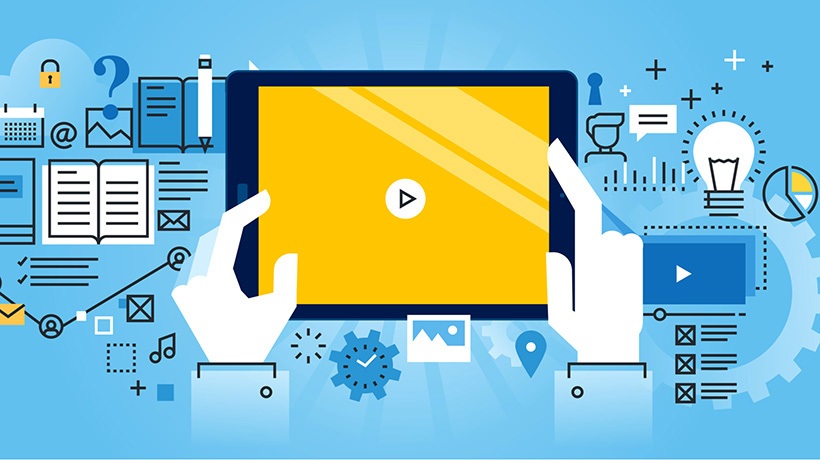Video Accelerates Achieving Learning Outcomes
Video provides unique challenges that are different from the traditional approach to Instructional Design. The accessibility and ease of creating videos are getting easier for the designer, while the range and depth of the capabilities of software providers continue to grow. The challenge for the Instructional Designer is creating and producing video that impacts the learner and meets the objectives of the course. Typically, a designer would write content that paints a picture in the learner’s mind. Now, imagery is a critical component to successfully creating a video that meets the stated objectives. This adds another skillset for the designer.
Learners consuming video is on an upward trend. If you have any doubts, let the following statistics help you decide.
A large internet video-sharing site states the following statistics as of 2019:
- 30 billion daily active users
- 5 billion videos shared to date
- 1 billion mobile users, 37% of all mobile traffic is consumed by video
Designers are embedding hosted video as part of their eLearning courses. Some of this is referenced material from other creators while some is their own content created in-house. In either case, the video was used to enrich the learners' experience.
Storytelling
Video expands on the foundation of traditional storytelling by utilizing a series of techniques designed to capture the learner’s attention and make them a better learner. If a picture is worth a thousand words, what is a video worth? Imagery is an important component, but it must be used in a way that supports the message and helps make it real to the learner. How you tell the story is important and varies from project to project. For example, a video could be created with narration, with dialog between the subjects, with a musical soundtrack, or with nothing more than compelling images. All have been used successfully, and it really is up to the designer to use the proper method to produce the desired outcome. Creating an immersive experience for the learner is a key objective of the designer. A successful experience helps the designer and the learner connect on multiple levels, including emotional and motivational and, most importantly, share the ability to recall the information and the ideas being expressed.
Video Should Be Interactive
To get the most value from video in your course, make it interactive. This is more than just the pause, stop, fast forward or rewind buttons. Making a video interactive is dependent on whatever software you decide to use. However, most video authoring tools designed for education will have features such as adding a hotspot. A hotspot is a clickable item that the user will see as an overlay on the video. Once the hotspot is clicked, it will invoke additional information that is relevant to the user at that exact moment they are watching the video. Prior to this feature, the designer would interact with the learner at the conclusion of the video. This is an important aspect that will differentiate how a student will absorb the content. In addition to the supplemental information, the designer can also introduce questions or a knowledge check to verify that the learner has received the proper information.
Ten Seconds To Set The Hook
20% of video consumers will give a video only ten seconds to prove its value. Although this number is just 20%, that is still a large enough number where your message is not getting through. In an educational setting, the concern is that the learner is not getting the training the educator expected. In corporate training, this can result in revenue loss or productivity loss. In either case, the potential loss is substantial.
Provide Anywhere, Anytime Opportunities For Learning
Forget about the varying labels that have been assigned to the generations. Video appeals to all ages regardless of culture or socioeconomic status. Part of the design process and challenge is for the video to be available to the learner at any time, no matter where they are. Getting the content to those remote users has been a challenge in the past. However, technology is making this possible with the implementation of 5G. All US carriers have now launched some form of 5G cellular network. One advantage the designer has is that these videos are short. They are easily hosted and downloaded with very little to no impact on the user, either financially or by wasting their time with long downloads. The key takeaways are that Just-In-Time learning can be accomplished, meeting both the needs of the learner (who has the need) and the designer (who meets the need).
Is Video Effective In eLearning?
Yes, but don’t just take my word for it. Wainhouse Research did an analysis and determined that 46% of employees found it to be somewhat effective and 44% of employees found it to be very effective. Combined the effectiveness is 90% (based on your learners' experience), this is a good indicator that video is effective.
For the corporate world, this may mean an increase in productivity, a decrease in employee turnover, and an increase in job satisfaction. For the academic learner, it becomes another tool for learning reinforcement.
Conclusion
Video has moved from "nice to have" to a positively "must-have." Video has become a core part of corporate training, marketing communications, education (K-12 and higher), sales enablement, and more. The learner already is comfortable with the technology and the ease of access to video. Designers for academic or for corporate training are already seeing the advantages. The benefits of video are clear and will continue to be integrated into every aspect of eLearning. Integrate video into your courses.
References:
[1] YouTube by the Numbers: Stats, Demographics & Fun Facts
[2] Analysis of Video Learning Effectiveness – Wainhouse Research <https://wainhouse.com/>

